Every engine builds up carbon and other gunk inside as it runs. Over time, this builds up, and can cause lifters to stick, can clog the engine, and affects performance and fuel economy.
Just changing the oil might not fix these issues. If that’s the case, you need to flush the engine to make sure that all of the contaminants in the engine are correctly cleared away.
- What Is an Engine Flush?
- What Can an Engine Flush Fix?
- What to Look for in an Engine Flush
- Top 7 Best Engine Flushes 2025
- 1. Best Overall Engine Flush: Liqui Moly 2037 Pro-Line Engine Flush
- 2. Best Engine Flush for Performance Vehicles: Lubegard Engine Flush and Protect Pack
- 3. Best for Improving Fuel Efficiency: Wynns 51265 Engine Flush
- 4. Best for High Mileage Vehicles: STP 18566 High-Mileage Engine Flush
- 5. Best Budget Engine Flush: Sea Foam SF-16 Motor Treatment
- 6. Rislone High-Milage Engine Treatment
- 7. Best Diesel Truck Flush: XADO Special Xtreme Flush
- Buying an Engine Flush: What You Need to Know
- Knowing When to Flush Your Engine
- Should I Regularly Flush My Engine?
- How Do You Flush an Engine?
- How Much Does an Engine Flush Cost?
- Can an Engine Flush Damage Your Engine?
- Can I Use an Engine Flush With Older Cars?
- How to Choose the Correct Engine Flush
- How to Minimize Engine Sludge
- Will I Need Anything Else When Flushing My Engine?
- How Do I Get Rid of Waste Engine Flush?
- Final Thoughts
What Is an Engine Flush?
An engine flush is an after-market additive that’s poured into your engine’s oil-filler port. They’re designed to mix with the oil and move through the engine, melting away sludge and built-up carbon, causing your engine to run better.
An engine flush generally comes in a small, single-use bottle that’s poured directly into the engine.
What Can an Engine Flush Fix?
Engine flushes can fix a whole range of problems, including:
- Built-up gunk and sludge from unburned fuel in the engine
- Carbonization buildup
- Increased oil usage
- Lowered performance from obstructed valves and combustion chambers
- Sticking lifters or valves
- Lower or prevent engine noises like ticking
- Cleans out oil filters
What to Look for in an Engine Flush
Several factors will help you decide exactly what kind of engine flush you need for your vehicle. When shopping around, consider the following:
Performance
How well does an engine flush actually pull out sludge, built-up carbon, and other compounds that gum up the works of your engine? How do the results of the clean actually affect performance? Make sure to invest in an engine cleaner that actually works.
Compatibility
There are three types of engine flushes: gasoline-engine specific flushes, diesel flushes, and universal flushes. Make sure you don’t use a diesel flush in your gas engine or vice versa, as instead of helping out your engine, you could end up doing serious damage.
What’s Inside?
Always important to consider in an engine flush is the chemical compound. Do your research on what’s a filler, what’s an active ingredient, and what are chemical etchers and acids that can sometimes do more harm than good.
Top 7 Best Engine Flushes 2025
1. Best Overall Engine Flush: Liqui Moly 2037 Pro-Line Engine Flush

Editor’s Rating:
Performance
The combination of simplicity and performance is why Liqui Moly is our number one choice. Suitable for almost any car or truck and completely safe, it melts away carbon deposits, debris, and other byproducts of combustion, opening up your engine and improving performance.
It’s also one of the easiest products to use. You just have to pour it into a warm engine and let it idle for 15 minutes, then drain the old oil and replace it.
The one downside with this flush is that it has no effect on oil usage. If you’re looking to buy a flush to decrease your oil consumption, then Liqui Moly isn’t the right choice. But for a general-purpose oil flush, consider this first.
Compatibility
Liqui Moly is compatible with almost everything with an engine. Petrol and diesel engines, four-stroke engines, it’s completely turbocharger safe, and neutral to seals and gaskets.
What’s Inside
Established in 1957, Liqui Moly is the market leader for engine additives, and it shows. They’re a German company that makes nothing but various engine liquids, with a dizzying 4000 products in the range.
The active parts of the formula are mineral oils and a weak acid that’s strong enough to burn away impurities but mild enough to be safe. Liqui Moly also contains additives that remove dirt, grime, varnish, gums, and other assorted buildup.
Pros
- Simple to use
- Will works in almost any vehicle
- Effective at clearing sludge and protecting against corrosion
Cons
- No effect on oil consumption
2. Best Engine Flush for Performance Vehicles: Lubegard Engine Flush and Protect Pack
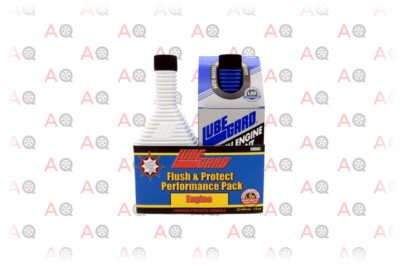
Editor’s Rating:
Performance
Lubegard engine flush is incredibly easy to use and get working in around 15 minutes. The cleaning power is exceptional, easily comparable to other top brands, and equivalent to anything else you could buy for home use.
The real winner here is how Lubegard affects oil usage. After treating your engine, you could potentially increase the mileage on your next oil change by up to 30%.
Compatibility
Lubegard is another universally compatible engine flush, meaning it’s safe to use with gasoline and diesel engines, as well as four stroke engines. The formula is also completely safe for gaskets and seals. If you’re looking for a diesel-specific cleaner, take a look at the XADO Special Xtreme Diesel Flush.
Whatever you’re driving, Lubegard is almost certainly suited for it.
What’s Inside
Unlike a lot of engine flushes, Lubegard has no harmful solvents. Zero. Not even a low-molar acid like Liqui Moly 2037 Pro-Line Engine Flush. Instead, it’s built around a powerful series of detergents, dispersants, and other softer cleaning agents that break down the garbage without attacking the engine itself.
Lubegard is a solid option at up to 100,000 miles, and in our opinion, should always be bought as a twin pack with Lubegard Bio-Tech oil protectant, which is added after the flush and extends the life of your oil and your engine.
Pros
- Easy to use
- Safe on gaskets and seals
- Synthetic blend that works with petrol and diesel
Cons
- Slightly more expensive than other options
3. Best for Improving Fuel Efficiency: Wynns 51265 Engine Flush
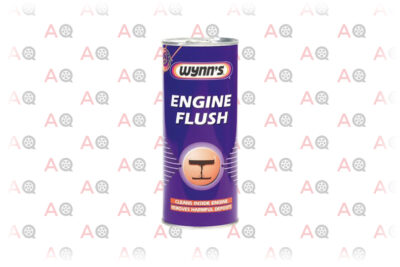
Editor’s Rating:
Performance
Like all high-quality flushes, Wynn’s 51265 will melt through anything that’s affecting the performance of your engine, including carbon deposits, sludge, varnishes, and other chemicals.
It’s very simple to use. Add to a warm engine and let the car idle for twenty minutes. Then drain and change the oil as normal. Some users recommend adding Wynn’s to your car and taking it for a short drive, or revving it halfway through the process, but we can’t recommend either of these. It’s best to follow the instructions.
Compatibility
Wynn’s works with all diesel and gas engines, and with all types of oil, including synthetic mineral and multigrade oils, although our favorite diesel engine flush is this XADO Special Xtreme Diesel Flush.
Wynn’s engine flush is also compatible with stationary equipment and other heavy-duty equipment.
What’s Inside
The active component of Wynn’s 51265 is a very highly concentrated detergent. There are no harsh solvents, meaning that this is incredibly safe for older vehicles that might have valves and seals that are wearing down.
In fact, Wynn’s flush actually neutralizes acids, preventing aggressive chemicals from damaging the internals of your engine. One can treats up to 6 liters of oil.
Pros
- Efficient and powerful cleanser
- Simple to use
Cons
- The chemical formula is aggressive. Use protective gear
4. Best for High Mileage Vehicles: STP 18566 High-Mileage Engine Flush
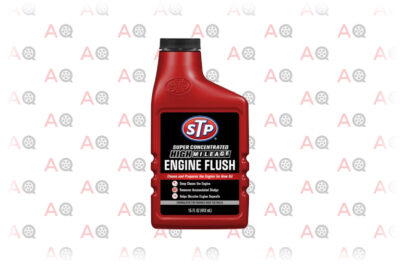
Editor’s Rating:
Performance
STP high-mileage has been designed from the ground up for high-mileage cars. It’s actually scientifically engineered and proven to improve oil drain on older cars with damaged seals.
In less than 15 minutes, it will burn through all the impurities in your engine, reducing sludge and varnish on cylinder heads, dissolving deposits in the engine, and clearing intake valves and combustion chambers. All without harming any seals.
For cars that haven’t been looked after correctly, either lack of oil changes, or just general wear and tear, STP 18566 could give them a brand new lease on life.
Compatibility
STP 18566 is supposed to be universally compatible with any engine, whether it’s diesel or gas, but the formula is designed around large amounts of miles.
This is important, as the formula is much stronger than the majority of products on the market, so make sure you read the directions and confirm that this is suitable for your vehicle.
What’s Inside
STP 18566 is supposedly a proprietary blend of powerful solvents and super-concentrated cleaning agents. We couldn’t find an exact ingredients list, but it bears repeating that this flush was designed for high-mileage cars that need a strong solvent.
Unless your car has at least 75,000 miles on the clock, do not buy this. It will be too strong for your engine. But if you need a powerful, effective flush that’s going to clean all of the gunk from even the roughest engine, you’ve found the right product.
Pros
- Strong, powerful flush
- Budget pricing
- Perfect for high-mileage cars
Cons
- Solvents might be too strong for newer cars
- Instructions can be difficult to follow
5. Best Budget Engine Flush: Sea Foam SF-16 Motor Treatment
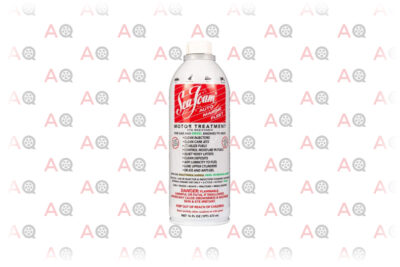
Editor’s Rating:
Performance
Seafoam SF-16 wasn’t specifically designed as an engine flush, but it more than does the job of one. The pure petroleum formula can be used on carb jets, fuel injectors, pistons, intake valves, and of course, as an oil flush.
Unlike standard flushes, the process for using Seafoam is a little different. You add a small amount (around 30ml per liter of engine oil used) then drive as normal for several hundred miles. Once you’ve put a couple of hundred miles into the car, change the oil as normal.
Seafoam can dissolve oil deposits, fuel residue, clean intakes, and more. For such a budget product, it does an awful lot.
Compatibility
As we already mentioned, Seafoam wasn’t originally designed as an engine flush. Because of that, it’s compatible with a much larger range of things than your general flush.
Picking up a bottle of this means that you could potentially treat a whole range of things. If you have a bike, a boat, even if you just want to treat your lawnmower, it’s all safe to use.
What’s Inside
Seafoam is a pure petroleum formula. That means no corrosive solvents, no detergents, no harsh chemicals.
However, it does mean you have to be more careful using this. It’s not a one-stop, dump the bottle into your engine and leave it kind of product. Instead, Seafoam needs a measured hand that knows what they’re doing. If you’re new to car maintenance, pick up something simpler. If you want a product that’s basically a toolbox in a bottle, this is a great choice.
Pros
- Fantastic value
- Targets the areas of the engine that are most heavily affected by fuel deposits
- Multiple ways to use it
Cons
- Doesn't have the best results on high mileage cars
6. Rislone High-Milage Engine Treatment
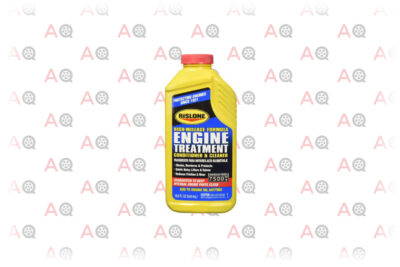
Editor’s Rating:
Performance
Rislone is one of the original engine additive makers, with a business lineage stretching back almost one hundred years.
This high-mileage engine treatment is a little different from the other flushes on our list. You put it into the engine at the same time as you change the oil, but instead of flushing the system and purging the old oil and flush, you add this with the new oil.
At that point, it sits in the system, doing what an oil flush would do, every time you start your engine.
Rislone cleans away gunk, restores the internals of your engine, and helps to protect sensitive parts. It can also help with stuck valves and noisy lifters, and burns away sludge, slowly improving performance.
Compatibility
Rislone is only compatible with gasoline engines. It’s not compatible with diesel. Looking for a diesel flush? Check out this flush from XADO.
It can be added to engine oil at any point but works best if it’s added to clean oil after an oil change.
What’s Inside
Built around a petroleum oil formula with added detergents, Rislone is safe and low impact, with no harsh solvents.
Rislone also sells an engine treatment fluid designed to reduce engine noise and increase performance drops caused by low oil pressure. This is incredibly simple to use, it only needs to be added to your engine and run for around one hundred miles before you change your oil. If you’re considering flushing the engine, picking up a bottle of Rislone Engine Treatment to use first is a good choice.
Pros
- Runs with your car protecting it on a daily basis
- Reduces wear and protects your engine
- Great value
Cons
- Not as strong as conventional engine flushes
- Doesn't extend engine life
7. Best Diesel Truck Flush: XADO Special Xtreme Flush
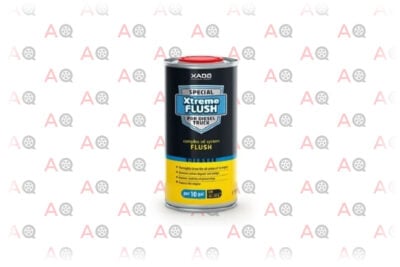
Editor’s Rating:
Performance
Diesel engines are heavier and work harder than petrol engines, and diesel itself is up to 20% denser than conventional gasoline, with a surprising amount of impurities.
Because of this, it’s common for diesel engines, especially larger engines, to build up those impurities and start to chug, especially after a hundred thousand miles.
This flush is built around that idea. Because it’s designed for diesel engines, it’s powerful, burning away carbon deposits and helping to lift stuck rings.
As a diesel flush, it’s also safe to use when driving, which is our recommended method. When adding this to the engine, drive it a short distance (around fifteen miles is fine) to let the flush work through a hot system.
Compatibility
Fully turbocharger safe, this flush is designed for and around larger diesel engines. There is no better option if you drive a large truck or van and need to flush the engine.
Another huge advantage of this flush is how far a single can goes. A conventional bottle of engine flush is designed to work with a normal oil system, which might contain three to five liters of oil.
But larger trucks need a lot more oil in their system. Which is why this one 500ml can of this flush can be used with up to 10 gallons (37 liters) of oil.
What’s Inside
The XADO diesel flush is built around a strong cleaning compound, backed up with abrasives to scour the worst of the engine muck clean, and a proprietary revitalizer that creates a barrier on the internal surfaces of the engine, slowing carbon build up in the future.
Because of the increased work done by large diesel engines, it’s recommended that XADO diesel flushes are used after every oil change.
Pros
- Specifically designed for large diesel engines
- One can goes a long way
- Still relatively inexpensive
Cons
- Should only be used with diesel trucks
Buying an Engine Flush: What You Need to Know
From use instructions to figuring out exactly what an engine flush does, there’s plenty to learn. Read on to learn the most important details on engine flushes.
The Benefits of an Engine Flush
Engine flushes can fix a whole host of issues with your engine, including:
- Removing Contaminants: Just running your engine causes burnt carbon and other fuel impurities to build up inside an engine. If it’s never flushed away, it will gradually build up over time and affect performance.
- Cleaning the Engine From Inside: Most working parts of an engine can’t be cleaned without pulling the engine to pieces, which is expensive and time-consuming. A flush can help keep the most important working parts clean and running healthy.
- Prolonging the Life of Oil: It stands to reason that putting clean oil into a filthy engine is going to make the oil just as dirty. Flushing the engine before changing the oil means that the new oil will stay fresh and clean for longer, improving performance and engine lifespan.
- Boosting Fuel Economy: An improperly running engine that faces extra resistance will use more fuel and put out less power, meaning more fuel consumption, especially at higher speeds.
- Minimizing Emissions: Stuck rings can let oil into the combustion chambers, where it will burn, leaving carbonized deposits throughout the whole engine and massively increasing emissions, including sometimes literally burning oil.
The Key Features of an Engine Flush
While most engine flushes promise similar results, they each take different approaches and use different ingredients to get the job done. Consider the following:
Compatibility
The most important part of an engine flush is whether it’s suited to your engine. Flushes will either be compatible with gasoline engines, diesel engines, or both.
Using the wrong kind of engine flush is a really bad idea, as it can cause more damage to your engine. For the best results, we recommend choosing well-known brands that are suitable for both gasoline and diesel engines.
Does It Contain Solvents?
Some engine flushes use solvents to burn away accumulated gunk and carbon from the engine. While most flushes will contain a mild solvent to help deal with particularly stubborn concentrations of gunk, it’s not recommended that most people purchase an engine flush with strong solvents, as it can cause damage to gaskets and engine seals.
How Easy Is It to Use?
Most engine flushes are designed to be simple to use. In fact, most flushes are just poured into the oil tank and left to do their thing.
But some stronger flushes need a specific engine flush machine to push them through the engine. Our list contains no flushes that require a flushing machine because, in our opinion, the benefits are outweighed by the downsides, but it’s something to bear in mind if you’re purchasing from elsewhere.
What Additives Are in Your Engine Flush?
Every engine flush is a chemical soup designed to burn away carbon and other muck from inside your engine. Most flushes will contain the following list of additives, in some concentration:
- Anti-wear additives: That help prevent long-term wear inside the engine
- Detergents: Which helps to break down and melt away contaminants
- Dispersants: To break larger particles down and make sure they flow out of the engine
- Lubricants: Unstick valves and make sure that everything is running cleanly
- Rust inhibitors: To prevent rust from building up inside older engines
Knowing When to Flush Your Engine
If you listen to your car, it will clearly tell you when you need to flush your engine. Signs include:
- A drop in overall performance, including less power
- Using a lot more oil than usual
- The smell of burning oil, especially when the engine has been running for a while
- A constant ticking or rattling from the engine
It’s also worth knowing that multiple short journeys are much worse on your engine than taking several longer ones, even if you drive the same total distance.
This is because multiple short journeys don’t give the oil enough time to heat up correctly. Moisture also builds up inside the oil, and without time for the engine to rest, won’t break down correctly. Heat and dust can cause an engine to wear far faster than it otherwise would.
Most modern engine oils already come with additives similar to engine flushes as part of the mixture. But these can only last for so long, and will eventually break down. So a car that’s not had an oil change for a significant time is also a good candidate for an oil flush.
Should I Regularly Flush My Engine?
It’s not usually necessary to regularly flush your engine. Engine flushes are only designed to be used when an engine has built up an excess of gunk and other harmful deposits.
If you look after your car correctly, you should only need to perform an engine flush around once a year, though this might change if you drive long distances or live in a hot and dusty climate. If you do regularly drive thousands of miles for work or pleasure, or live in the desert, it might be necessary to flush your engine every time you change the oil.
How Do You Flush an Engine?
The process of flushing an engine is surprisingly simple.
- Start by turning your car on. Let it run for ten to fifteen minutes until the engine is at a normal operating temperature.
- Open your oil cap, being careful as it might be hot after leaving the engine running.
- Pour the required amount of engine flush into your engine. This can vary between manufacturers. Some will require a certain amount depending on the size of your engine, but most flushes come as a single-use bottle.
- Recap the oil tank, and let your engine run without revving for another ten minutes, to let the flush work its way through the oil system.
- Turn the engine off, and give it a few minutes to cool.
- Change your oil, following the normal process.
The last step is particularly important. It’s vital to change your oil immediately after you run an engine flush, every time you use an engine flush!
How Much Does an Engine Flush Cost?
Engine flushes aren’t expensive. Most branded engine flushes will cost twenty to thirty dollars on average.
Considering the benefits, that’s a tiny cost, especially if you’re doing it from home.
A professional engine flush performed in an auto shop is slightly more expensive and might cost you between one hundred and two hundred dollars. But realistically, engine flushes are so easy to use that there’s no need to ever get the procedure done in the shop.
Can an Engine Flush Damage Your Engine?
Yes. Used incorrectly, there are two ways an engine flush can damage your engine.
First, a flush that is too corrosive can damage seals and gaskets, causing more long term problems than they fix.
Flushes that contain highly corrosive solvents are only suitable for professional use, or to clear heavily stuck sealing rings.
Second, a flush that’s too weak can also cause damage to an engine by freeing up a large chunk of deposit or sludge from an area and causing it to move somewhere else in the engine, without actually breaking it down, where it can cause more damage.
In general, cheaper flushes tend to have weaker solvents and detergents, so it’s best to avoid them.
Can I Use an Engine Flush With Older Cars?
If your car is particularly old with high mileage, you should be careful when using an engine flush.
Older cars that have been badly maintained might have engine seals that are held together primarily through oil and sludge.
If this is the case, an engine flush could disturb the seals and cause longer-term problems.
How to Choose the Correct Engine Flush
Choosing the correct engine flush is mostly about matching the requirements for the engine of your vehicle.
Make sure you read the engine flush bottle. Each bottle will clearly state which oil grades it can be used with and whether it has an expiration date.
Also, follow the manufacturer’s instructions on your vehicle. Most handbooks will have instructions on how to change your oil, and flushing an engine uses almost exactly the same process.
Make sure never to buy engine flushes that contain harsh chemical solvents. Cheaper flushes rely on acids and other solvents that can wear down the internals of your engine, doing damage to seals and gaskets and actually making your engine run significantly worse in the long run. Engine flushes like Liqui Moly 2037 Pro-Line Engine Flush don’t use these compounds.
The only exception to this is if you drive an older vehicle with an engine that sticks or chokes. In this case, an engine flush that contains a mild solvent could be useful to help lift stuck rings or lifters, clearing the problem and letting your engine run smoother.
How to Minimize Engine Sludge
Minimizing engine sludge is one of the easiest ways to keep your car running as it should. The following simple steps will help reduce all types of compound buildup.
- Change your engine oil regularly (check out a list of our favorite engine oils here).
- Use a premium synthetic oil that’s designed for your engine
- Avoid taking short journeys where possible, especially in sequence.
Will I Need Anything Else When Flushing My Engine?
If you’re planning on flushing your engine correctly, then yes, you’ll need to buy several things in preparation
An engine flush should be performed at the same time as an oil change. This means you’ll need the same tools as you would for an oil change, which should include:
- New oil
- A new oil filter
- A wrench
- Something to catch the used oil in
Expect the whole process to take around two hours. Changing your oil can take up to an hour, and flushing an engine takes around half an hour. With added setup and cleaning time, two hours is a safe bet for duration, especially if this is your first time flushing an engine.
How Do I Get Rid of Waste Engine Flush?
When you flush your engine, the engine flush chemicals exit the engine mixed with the used oils.
Start by catching the used motor oil. You can buy a drainage pan for a very low price, which will capture the used oil and let you transport it easily.
It’s common for oil spots to end up on the ground, despite putting down a capture pan. If this happens, use an absorbent material like kitty litter or sawdust to soak it up, then sweep up the debris.
When moving used oil, it needs to be transported correctly in a tightly sealed container. Never pour oil down the drain or throw it in the trash. EPA sources suggest that one car’s worth of oil poured down the drain could potentially contaminate up to one million gallons of water. Don’t do it!
Most local auto-parts stores will have the option to recycle used oil. If your local store doesn’t offer this service, you will need to find a recycling station.
Final Thoughts
When you’re working on your well-loved car, the simpler a product is to use, the better. Pair that with impressive performance and it’s easy to see why the products on our list are well trusted.


